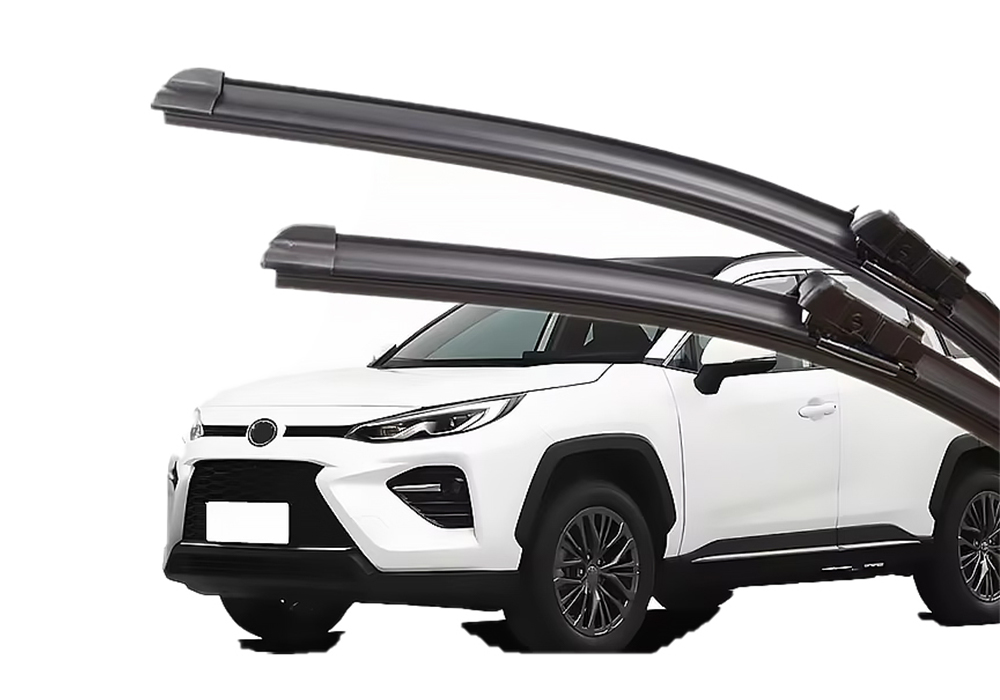Why Do 90% of Car Owners Overlook This Critical Detail?
I. What Are Windshield Wiper Blades? – The “Second Pair of Eyes” for Rainy Weather Driving
1. Basic Structure of a Windshield Wiper
A windshield wiper comprises two primary components:
– Frame (Metal/Plastic): Transmits motor power and secures the position of the rubber blade.
– Rubber Blade (Wiper Blade Rubber): The flexible component that directly contacts the windshield, removing rain, mud, and frost through high-frequency oscillation.
2. Technological Advancements in Wiper Blades
Material Evolution Across Three Generations:
– Natural Rubber (1940s): Prone to aging, with an average lifespan of 3–6 months.
– Neoprene (1990s): Enhanced UV resistance by 50%, extending durability.
– Graphite-Coated Silicone (2020s): Self-lubricating design with a lifespan exceeding 2 years.
Aerodynamic Design: High-end wipers feature integrated drainage channels to ensure a tight seal against the glass during high-speed driving.
II. Why Replace Wiper Rubber Blades? – Four Compelling Reasons
1. Reduced Visibility Increases Accident Risk
Data Insight: According to the National Highway Traffic Safety Administration (NHTSA) in the United States, **the degradation of rubber blades raises the accident rate in rainy conditions by 27%.**
Key Scenarios:
– Nighttime Reflection: Residual water films refract oncoming headlights, causing temporary blindness.
– Heavy Rain: A malfunctioning rubber blade leaves over 30% of the windshield uncleaned per minute.
2. Rising Costs of Windshield Repairs
– Scratch Repair: Addressing a single deep scratch costs approximately 800 yuan.
– Glass Replacement: Replacing the front windshield of a premium vehicle can cost up to 15,000 yuan.
3. Legal Compliance Risks
Traffic regulations in numerous countries prohibit vehicles with defective windshield wipers from being driven on public roads. Violators may face fines or penalties.
4. Winter-Specific Challenges
Case Study: During the 2022 Canadian blizzard, 23% of chain-reaction rear-end collisions were attributed to frozen and failed wiper rubber strips.
III. Is It Time to Replace Your Wiper Blades? – Five Self-Check Indicators + Three Decision-Making Steps
Self-Check Indicators (Essential for Car Owners):
– Visual Inspection: Examine for sawtooth wear or cracks. Utilize a macro lens on your smartphone for detailed assessment.
– Auditory Warning: A “clunk” sound during wiping signifies hardened rubber.
– Performance Test: After activating the windshield washer fluid, if visibility does not clear within 5 seconds, consider replacement.
– Life Expectancy: Regular rubber blades should be replaced every 12 months, while silicone blades can last up to 24 months.
– Environmental Stress: Conduct special inspections following sandstorms, acid rain, or temperatures below -20°C.
Replacement Decision Framework:
– Economy Option: Replace only the worn rubber strips to save 60% of the cost. Suitable for individuals with basic DIY skills.
– Standard Option: Replace the entire wiper arm (recommended brands include Bosch and Valeo with quick-fit interfaces).
– Premium Upgrade: Opt for coated rain wipers, which restore the hydrophobic coating of the glass during operation.
Conclusion: Safety is paramount; clear vision is invaluable. A $50 investment in replacing wiper blades could prevent a $500,000 accident.
Post time: Apr-29-2025

